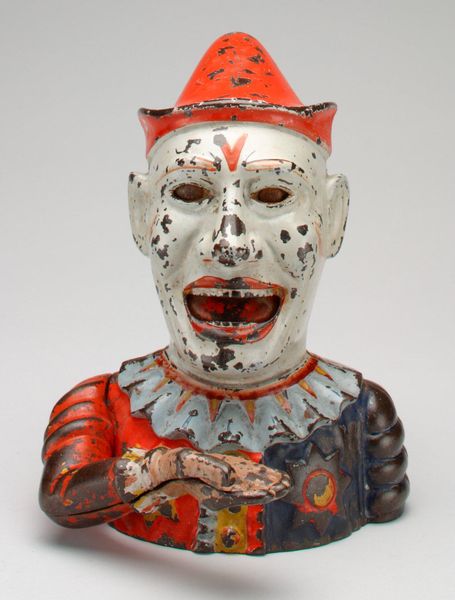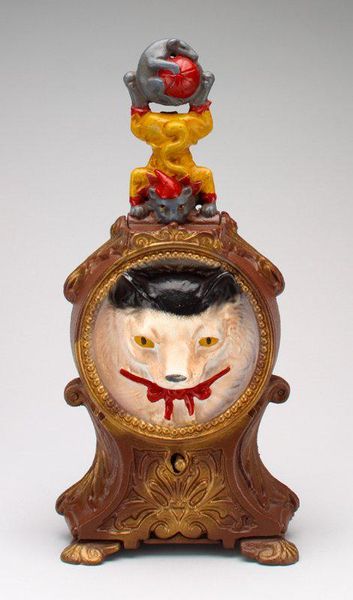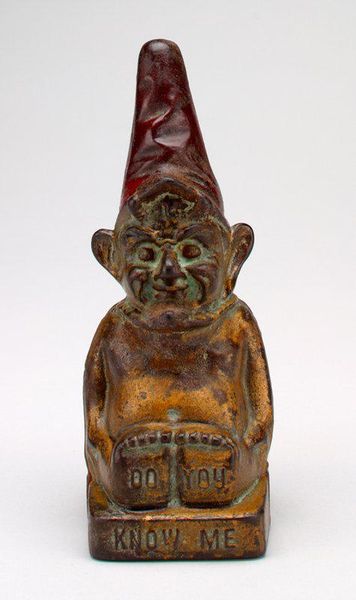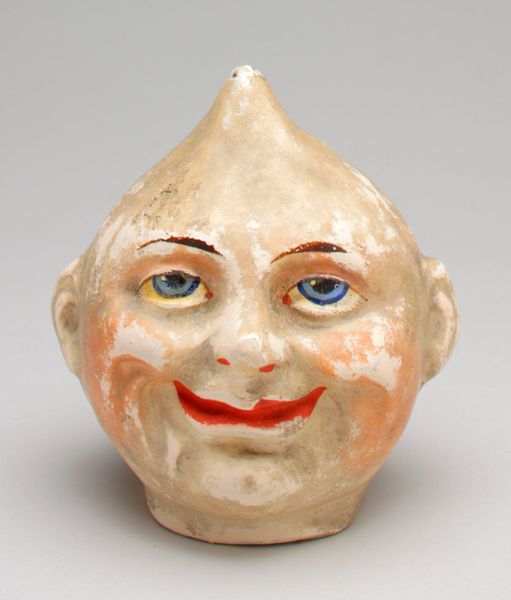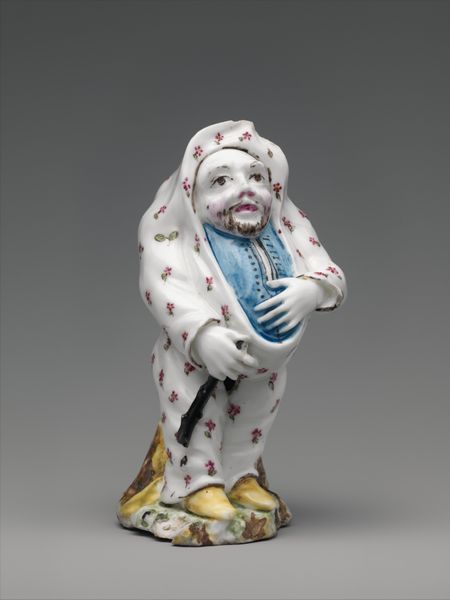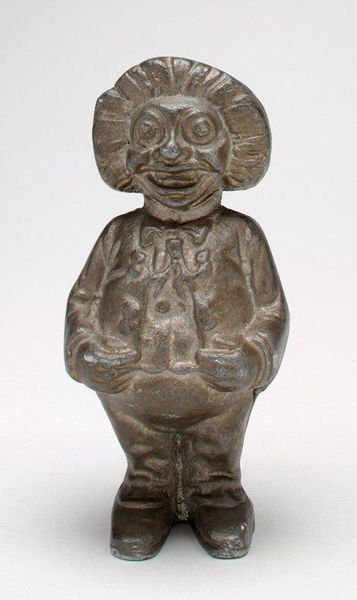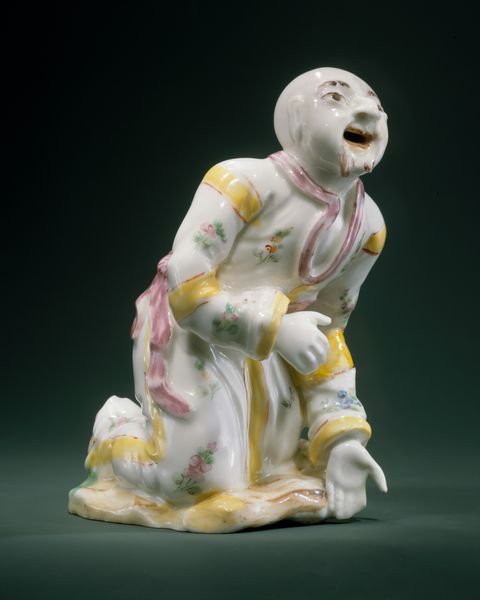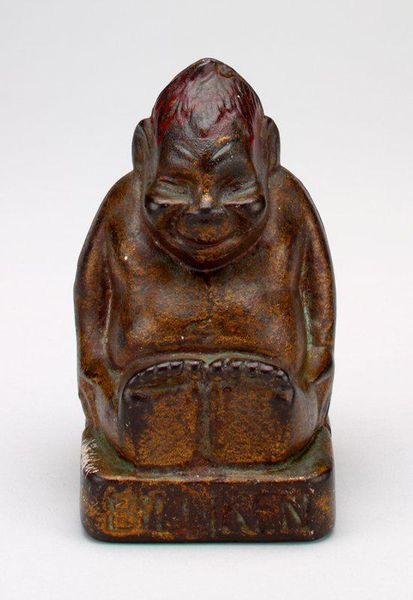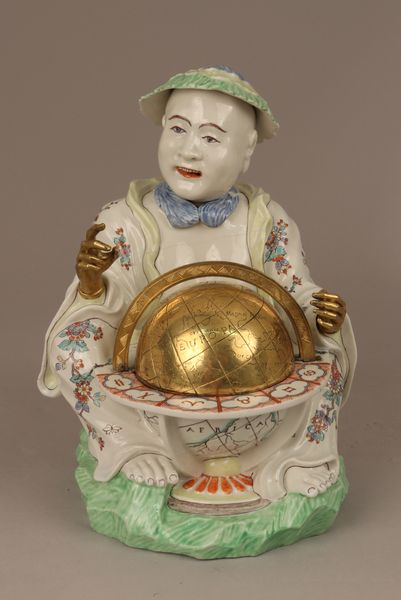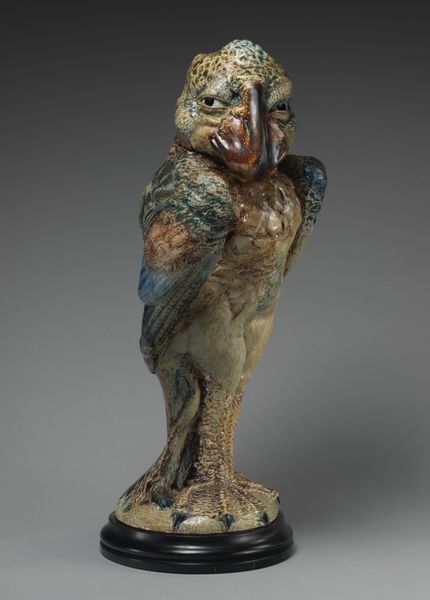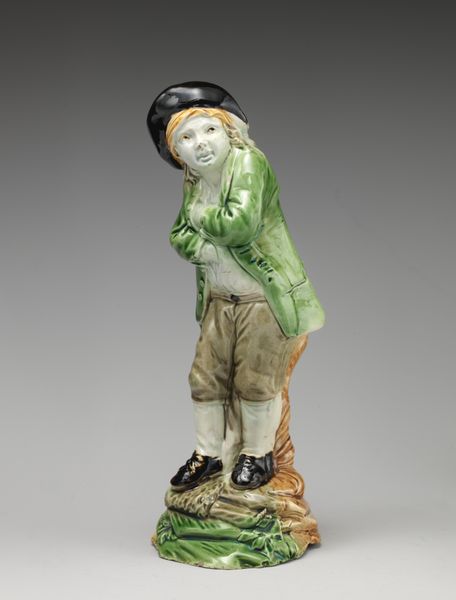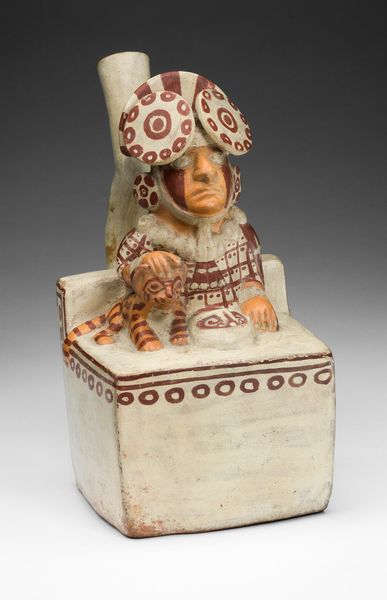
assemblage, metal, sculpture
#
portrait
#
assemblage
#
metal
#
figuration
#
folk-art
#
sculpture
#
united-states
#
decorative-art
Dimensions: 4 3/8 x 3 3/8 x 2 3/8 in. (11.11 x 8.57 x 6.03 cm)
Copyright: No Known Copyright
Editor: Here we have "-Bill E. Grin- mechanical bank," crafted around 1915. It's an assemblage made of metal, a sculpture that's part portrait and part folk art, it appears. I find it so unsettling, this wide grin on what looks like a clown’s face. What do you see in this piece? Curator: Indeed, the imagery carries quite a weight. It’s a reflection of early 20th-century cultural anxieties and fascinations. The clown figure, particularly, often operates as a liminal character – a symbol that straddles joy and fear, order and chaos. Consider how minstrelsy influenced its design, revealing some rather painful truths in cultural memory. What emotions do you think that exaggerated grin is intended to evoke? Editor: That’s a really interesting point. Thinking about minstrelsy, that grin feels less innocent now; almost… mocking? Like a caricature of happiness. Curator: Precisely. And notice the eyes: wide, unblinking. They don't quite match the cheeriness implied by the grin, do they? That’s a deliberate juxtaposition, I believe, meant to elicit a feeling of unease, maybe even distrust. The mechanical aspect also transforms the image. The constant grin becomes performative, stripping away emotional depth. This complicates its message, what do you think that does to the reading of the overall image? Editor: I see what you mean. The performance amplifies that sense of mockery we discussed. I hadn’t initially connected those elements before. Thank you! Curator: My pleasure. Visual culture encodes so much, inviting new layers of interpretation to light. Always delve beyond the surface and ask more from the objects we encounter.
Comments
No comments
Be the first to comment and join the conversation on the ultimate creative platform.
